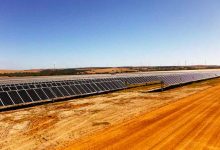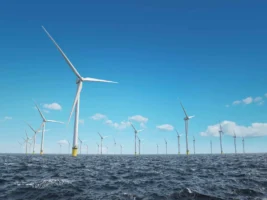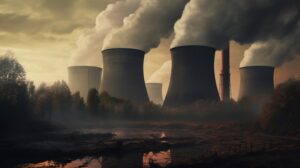New data released by Bloomberg New Energy Finance confirms that investment in large scale renewable energy in Australia plunged in 2019 as the federal government turned a blind eye to the needs to continue the clean energy transition, and provided no policy certainty.
The 60 per cent fall in investment over the last 12 months – just as the country needs to accelerate the clean energy transition – was also blamed on numerous other issues that have emerged in the past two years, such as connection delays and transmission losses and overcrowding on certain parts of the grid – all of which point to a lack of long term planning.
The federal government has been keen to take credit for the record amount of investment in renewables in 2017 and 2018 – largely the result of the renewable energy target introduced by Labor (with support from the Coalition), but which the Abbott government and leading business groups and the fossil fuel lobby tried to kill.
In the end, the RET was only reduced in scale, but still resulted in a huge rollout of large scale wind and solar farms, while households and businesses also invested record amounts in rooftop solar.
But while the investment in rooftop solar continue to grow in 2019, with total installations topping 2.2GW after a 35 per cent jump over the previous year, the amount of investment in new wind and solar fell dramatically to the lowest level since 2016 – confirming other analysis by the likes of the Clean Energy Council, Green Energy Markets and ITK.
This table above (please click to expand) shows the history over the last 15 years, and the investment drought caused by the Abbott government’s review of the RET in 2014. In the last year, however, wind investment has fallen by more than half half and large scale solar investment by nearly two thirds.
According to BNEF, the fall in large scale wind and solar investment was the biggest in the world. It also came after the Coalition government repeatedly refused to lift its emissions reduction target, talked down the prospect of wind and solar, and was accused of sabotaging climate talks in Madrid by claiming credits for emissions reduction it had not achieved.
“Despite the sharp decline in investment, these figures speak to a remarkable resilience; 2019 was destined to be a tough year for investors in Australian large-scale renewable energy,” said Leonard Quong, BNEF’s senior analyst in Australia.
“Australia’s major political parties took ideologically opposed clean energy platforms to the May 2019 federal election, once again stymieing any hope of long term policy certainty.
“Conditions across Australia’s thinly spread out electricity network continued to deteriorate; falling loss factors cut revenue expectations for many, curtailment began to bite for some and connection delays were a major source of pain for a few.”
“Despite these headwinds new capital continued to enter the market, although at more of a trickle than a flow. Cost reductions of renewable energy, innovations in risk management strategies, new services from battery storage and state based renewable energy programs, all played an important role preventing a greater collapse in new investments.”
The plunge in investment is also a concern because Australia needs to continue to build new capacity to replace the majority of its ageing coal fired generators that are due to retire over the coming 10-15 years. At the moment, individual state targets and initiatives are the only policy mechanisms providing any certainty.
The Australian Energy Market Operator says that more than 30GW of new capacity will be needed just to replace coal fired generators, and up to 47GW needed if Australia is to act on what scientists say is needed to try and cap average global warming to 1.5°C. AEMO has mapped out a pathway to 90 per cent renewables by 2040 as the best way to achieve this.
The Coalition, however, has continued to try and demonise renewables, and mock other technologies such as battery storage. Energy minister Angus Taylor has repeatedly said there is “too much wind and solar” in the system, and despite AEMO’s pathway to 90 per cent renewables has signalled plans to pursue up to 100 other technologies, including carbon capture and storage.
Labor climate change spokesman Mark Butler pointed to the contrast between the sharp fall in Australia and the growth in the rest of the world, where investment rose by 1 per cent to $US282 billion ($A410 billion), but the amount of wind and solar capacity increased by 20GW to 180GW thanks to falling costs.
“Investment and jobs in renewable energy should be soaring in Australia – as it is around the rest of the world,” Butler said in a statement.
“Instead, thousands of jobs are likely to be lost. For seven years the Liberals have launched 18 energy policies, which have all failed. All Scott Morrison has delivered are soaring power bills and a collapse in renewable investment and jobs.”
BNEF reported that the 2019 global data was boosted by a late surge in investment in offshore wind, where costs have slumped dramatically in the past year and
China remained the biggest market in the world, with investment of $88 billion – a fall of 6 per cent largely attributed to its re-callibration of incentives and tariffs and its focus on subsidy free investment.
The US, despite the best or worst efforts of President Donald Trump, overtook Europe to be the second biggest market with a 28 per cent jump to $US55 billion – largely credited to a rush by wind and solar developers to beat the expiry of tax credits for those technologies in 2020.
“It’s notable that in this third year of the Trump presidency, which has not been particularly supportive of renewables, U.S. clean energy investment set a new record by a country mile,” said Ethan Zindler, head of Americas for BNEF, noting that the second-highest year for investment ($45.7 billion) came in Trump’s first year, 2017.
“These technologies are more cost-competitive than ever, and the fact that there was a tax credit step-down on the horizon made the market particularly busy in 2019.”
Europe investment fell 7 per cent to $US54.3 billion, but some countries such as Spain and the Netherlands recorded spectacular increases.
Spain led the way with $US8.4 billion, up 25 per cent on 2018, and the highest annual figure for that country since 2011. It included $US6 billion of solar investment at record-low costs per megawatt.
“Developers are building PV parks on the back of low tariffs agreed in government-run auctions or, increasingly, without any subsidy support at all.” said Pietro Radoia, senior associate for solar at BNEF.
Japan invested $US16.5 billion in renewable capacity, mainly solar, in 2019, down 10 per cent, ,India put $US9.3 billion into green energy, 14 per cent less than in 2018, while the United Arab Emirates invested a record $US4.5 billion – almost all of it for the 950MW Al Maktoum IV solar thermal and photovoltaic complex in Dubai.
In Latin America, Brazil lifted renewable energy capacity investment by 74 per cent to $US6.5 billion last year, while Mexico committed $US4.3 billion, up 17%, and Chile $US4.9 billion, up fourfold, and Argentina $2 billion, down 18 per cent.











